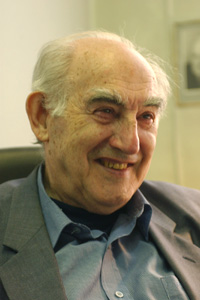
One of the most important problems in the field of nanotechnology and superconductivity is designing and creation of the room temperature superconductors. The current task consists in finding or artificial synthesizing materials with critical temperature of the order of 300K, i.e., room-temperature superconductors (RTS).
One of the most powerful and promising ways for achieving this aim is designing artificial layered superconducting nanostructures, by depositing monolayers …. with atomic precisionsс, in order to design artificial electron and phonon energy spectra. It is precisely the reason to make the superconducting materials studies a playground for approbation of nanotechnology methods. Thus, creation of the RTS materials is, to the large extent, a nanotechnology problem and, in my view, one of the major problems. For studying this problem one has to have a modern laboratory.
Academician V.L. Ginzburg («Poisk» newspaper 22/02/2008.).
For purposeful motion towards solution of the global problem of RTS, in the SCES Laboratory we perform search and synthesis of novel HTS materials, crystal growth, and studies of their physical properties, such as energy gaps in the spectrum, IR reflectivity spectra, specific heat and chemical potential variations, magnetization, critical current, critical magnetic field, vortex lattice pinning. Besides, we take measurements of the parameters for industry manufactured HTS materials, and develop ways of making wires on the base of the novel HTS materials; finally, we develop and test laboratory HTS devices for physical experiments and for electrical power engineering.
The intensively studied novel FeAs-based HTS materials have rather unusual properties, thanks to the proximity of the two neighboring phases, superconductor and antiferromagnet, and a giant magneto-structural coupling. Currently, not only pairing mechanisms, but even symmetry of the order parameter remains unknown. A widely discussed is a possibility of pairing due to magnetic fluctuations. From practical viewpoint, the novel iron-based superconductors are prospective for high magnetic field technology, due to their enormously high critical field values, exceeding hundreds of Tesla.
